How to make money from your garden – growing cut flowers
Sue Oriel has started a business growing cut flowers to sell from her garden. It’s called Country Lane Flowers, which she runs with her friend and neighbour Stephanie Bates.
And although Sue’s garden is quite large – an acre – she only uses about a tenth of it for growing cut flowers, so people with much smaller gardens could grow flowers for cutting.
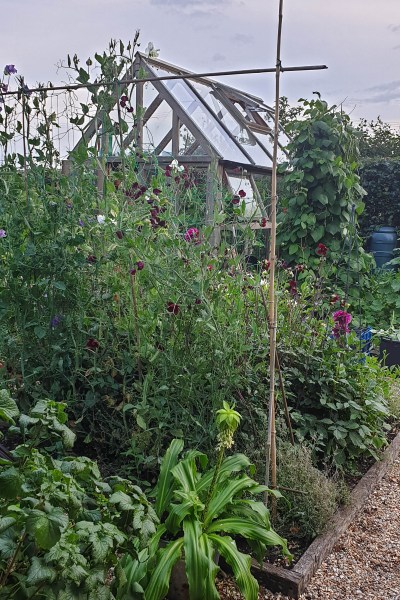
Sue has re-purposed her veg patch for growing cut flowers. She wishes she’d bought a bigger greenhouse, though!
She re-purposed her veg growing patch, which is around 50ft by 50ft, which is where she grows most of the flowers. Sue does also have some cutting flowers in the ordinary beds but she says that the growing mentality is very different.
She sells flowers to local florists and does locally grown flower arrangements for weddings, parties, funerals and more.
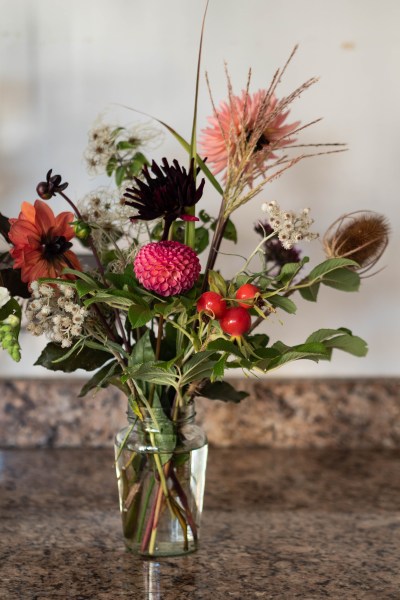
One of Sue’s homegrown seasonal flower arrangements. She also forages for elements, such as the teasel and has added rose hips from her wildlife hedge.
Why grow your own cut flowers?
Growing – or buying locally grown – flowers is a logical step after growing or buying local food. We want seasonal, fresh, local fruit and vegetables that haven’t been flown around the world. Think ‘flower miles’ instead of ‘food miles.’
We also increasingly want to know what conditions food and flowers have been grown under. What chemicals have been used? Are staff treated well?
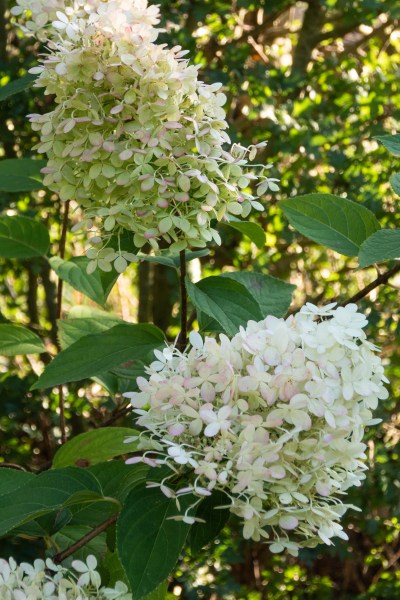
Sue plans her cut flower garden so that she has flowers to sell in spring, summer and autumn. These hydrangeas are also good for winter because they can be dried.
The spectre of modern slavery hovers over our food chain. Many of the issues that apply to food also apply to flowers. It’s easier to ask questions and find answers when you buy flowers that have been grown round the corner.
Most of the UK’s cut flowers were grown here until the 1970s. But the industry couldn’t compete with the growth of large scale – often subsidised – commercial flower farming in other countries. Flowers are routinely flown or driven across continents and treated to delay or preserve flowering.
But now there is a growing movement of new British flower farmers, ranging from larger-scale professional flower farmers to small, homegrown cut flower growers like Sue. You can find local flower growers via Flowers from the Farm.
Or look under the #flownnotgrown hashtag on Instagram and Twitter. You can also follow Country Lane Flowers on Instagram (@country_lane_flowers).
Growing cut flowers is different
Sue says that you need to have a different approach to growing flowers for cutting to those you grow in the garden. ‘When you’re growing flowers for cutting, you’re just thinking about maximising the space available. You don’t want to think about whether one flower looks good next to another – that’s irrelevant if you’re going to be cutting it.’
How you support the plants is also different. Supports for garden flowers need to be discreet or ornamental.
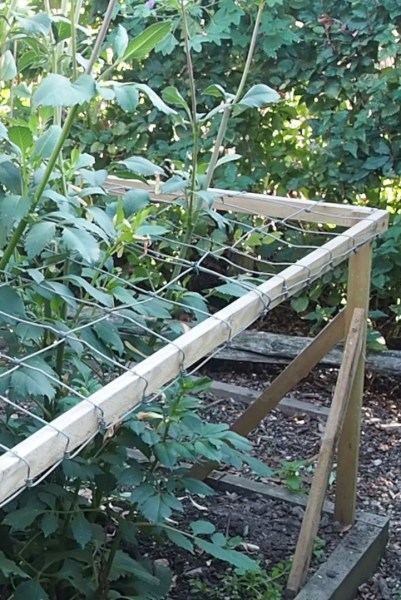
Sue makes a simple frame fixed to the edge of the raised bed and covers it with pig wire. The flowers grow up through it.
But if you’re supporting cut flowers, you can take an easier, less beautiful approach. Sue makes a wooden frame for the whole border and covers the frame with pig wire. The flowers grow up through the frame. ‘But you’d never do that in an ornamental flower border,’ she says.
And you need to be unsentimental when you’re growing flowers for cutting, she says. ‘Once the flowers are over, that’s it. You rip the plant out.’
Planning a cut flower garden
‘Divide your planting into four categories of cut flower,’ says Sue. ‘You’ve got your bulbs, which flower in the spring – plus a few that flower in late summer. Then you have your annuals, which flower from early to late summer. Then there are perennials, which flower when they flower. And then you have bi-ennials.’
You need to create a grid, so you’ve got flowers to harvest in spring, summer and autumn.
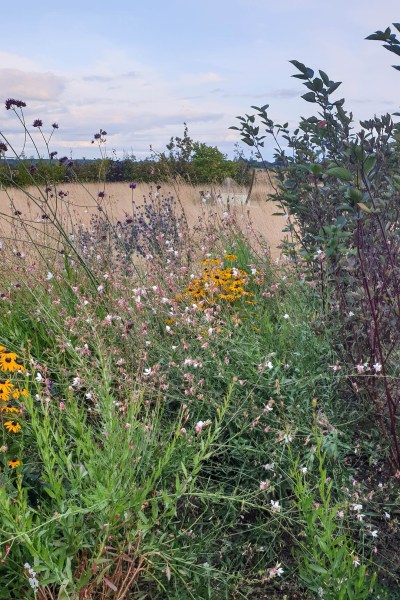
Sue also keeps bees and makes honey. The bees are important in flower growing because they pollinate the flowers, but Sue also keeps patches of flowers as special ‘bee food.’ This patch has echinops, gaura and rudbeckia. Sue experiments with drying them.
We’re talking in September, which means she’s harvesting dahlias and some flowers for drying. And she’s also planting her biennials for next spring. ‘I love foxgloves for cutting,’ she says.
Which are the best flowers to grow in cutting gardens?
Sue believes that you should mix favourites with a few unusual flowers. She grows sweet peas, dahlias, wild carrot, tulips, scabious, astrantia, echinacea, fennel and antirrhinnums (snapdragons) and lots more.
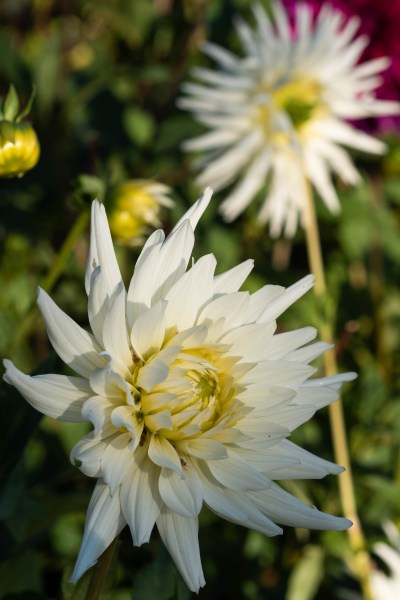
Dahlias are one of the best choices for growing cut flowers. But not all dahlias are equally good!
Within each type of flower, some varieties will be better for cutting than others. For example, in our recent post ‘Everything you need to know about growing dahlias,’ Steven Edney explained that the single dahlias were better as a garden flower while the more ornamental dahlias all made excellent cut flowers.
So it’s always a question of trial and error.
Which flowers are best for drying?
Sue thinks that dried flowers are experiencing a rennaissance. It’s all part of the ‘no waste’ philosophy. ‘If a florist has flowers left over in the summer, then they’ll often dry them so they’ve got something to sell in the winter when there’s very little about,’ says Sue.
I’ve noticed it too – I’ve seen stylists recommending dried flowers for weddings and other events on blogs and Instagram posts.
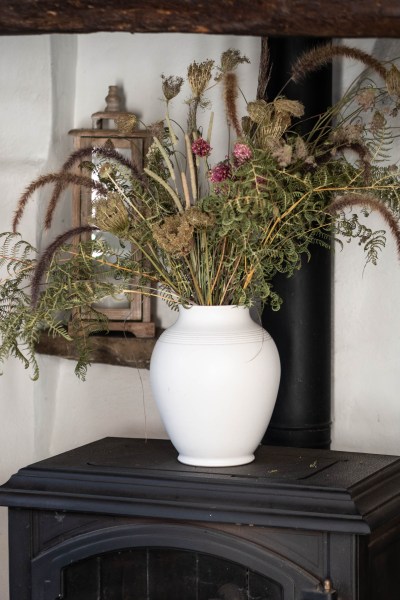
One of Sue’s contemporary dried flower arrangements, using dried ornamental grasses and bracken, dried wildflowers and dried alliums. Sue says that drying the flowers so they curve naturally gives the arrangement a much more contemporary look.
She is experimenting with a wide range of dried flowers. So far, she has found the following dry well: hydrangeas, larkspur, honesty, pennisetum, wild carrot, artichokes, several different types of allium and even bluebells.
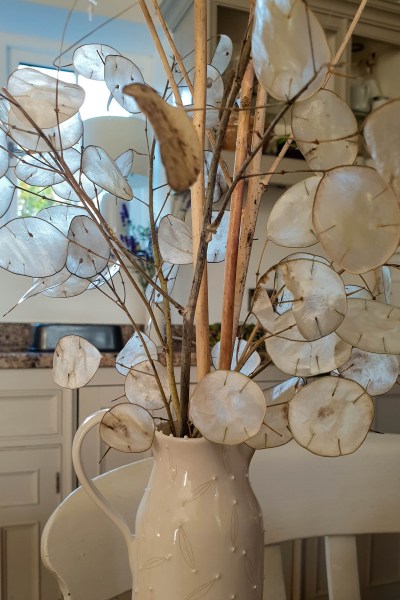
Honesty dries well and looks beautiful.
Once again, trial and error is the only way to find out. Sue doesn’t specifically grow flowers for drying, but she tries out all the flowers she grows to see how they dry. ‘Dahlias don’t dry, I’ll tell you that for nothing,’ she says. ‘Hydrangeas, for example, only dry in buckets – they just fall apart if you try to dry them upside down.’
‘And sometimes I think a flower will work and I’ll put it in a bucket to dry. Then the result is a terrible sad thing.’
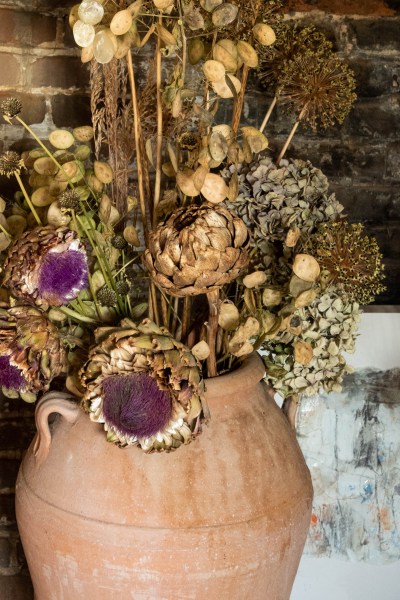
Dried artichokes, alliums and hydrangeas in Sue’s spare bedroom. They all dry well.
Two very easy ways to dry flowers
Sue doesn’t use special equipment or chemicals when she dries her flowers. She just dries them in two very simple ways.
Firstly, she ties them in bunches and leaves them to dry hanging from a beam and out of direct light.
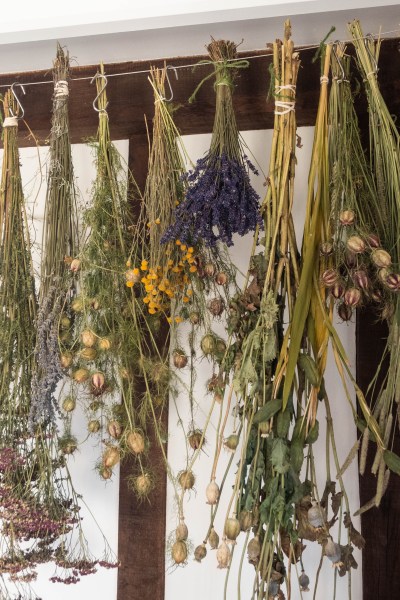
Sue is drying these flowers upside down in her spare bedroom. She also has dried flowers hanging in the garage. You don’t need any special products to dry flowers.
Or secondly, she leaves the flowers in a bucket without water.
‘You need to think about what effect you want before deciding which way to dry them,’ she says. ‘If you hang them upside down, they’ll stay poker-straight. If you leave them in a bucket, they’ll dry with a natural curve, which I think is much more contemporary.’
Once again, different varieties of the same flower can perform differently. Sue has noticed that her Lavender ‘Hidcote’ keeps its deep purple colour when it dries, provided that she cuts it when it’s at its peak. ‘But Munstead and some of the other lavenders don’t.’
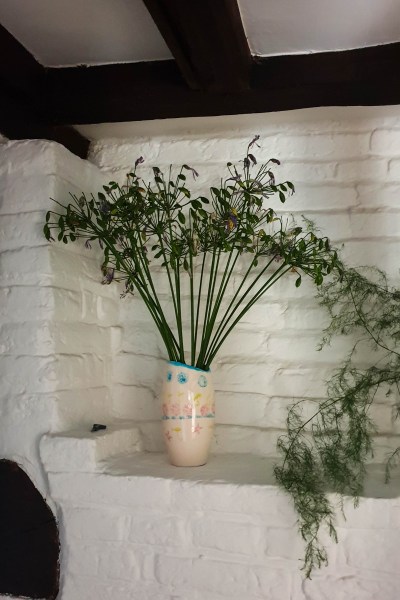
A jug of agapanthus and a jar of asparagus foliage drying in a sunlight-free corner of Sue’s hall. She recommends keeping dried flowers in pots or jugs as she doesn’t think clear glass looks as attractive.
Sue also says that you have to experiment with different flowers and when to cut them for drying. ‘Santolina stays a proper yellow if you cut it when it’s in full flower,’ she explains. ‘And so does Allium sphaerocephalon. But the bigger alliums, such as Christophii or Purple Sensation lose their colour. Don’t cut them until they’ve gone to seed and then they’ll be like great big starry things.’
How to make dried flower confetti
Sue makes dried flower confetti for weddings – especially for her niece’s wedding next year, for which she is growing all the flowers. ‘Rose petals don’t seem to work for homegrown confetti. They just go brown,’ she says. ‘But I’m growing lots of larkspur, which keeps its blue colour beautifully. It’s hanging upside down in my neighbour’s barn
So where do you sell the flowers you grow?
Country Lane Flowers make up bouquets of fresh or dried flowers for individual clients and they can also do the flowers for special events, such as weddings. They also supply to local florists. Contact them on [email protected] or [email protected].
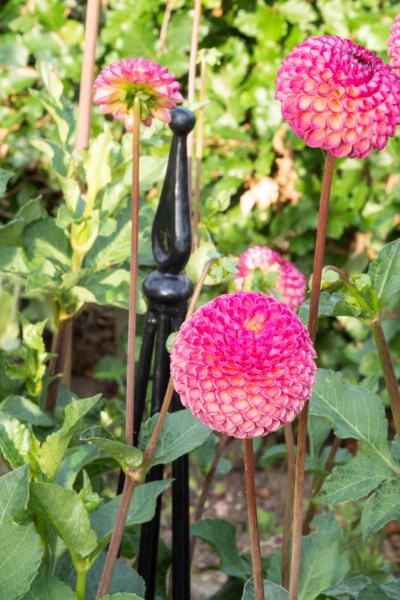
One of the dahlias in Sue’s cutting beds (formerly the veg patch).
More about growing cut flowers
There are several good books about growing cut flowers. One of my personal favourites is The Cutting Garden – Growing and Arranging Cut Flowers by Sarah Raven. I learned alot from this book when I first started gardening. Sarah Raven also runs cut flower growing courses.
(Note: links to Amazon are affiliate, see disclosure.)As an Amazon Associate I earn from qualifying purchases. Other links are not affiliate.
Flower farmer Georgie Newbery’s The Flower Farmer’s Year is also highly recommended by many garden lovers I know. And so is The Cut Flower Patch by Louise Curley.
You can get UK grown dried flower confetti from Amazon if growing it doesn’t work.
See Sue’s beautiful English country garden in video
And if you don’t have a patch which you can set aside to grow your own cut flowers, then buy flowers or flower arrangements locally from small growers like Sue. or when you’re buying flowers, even in supermarkets, look to see where they have been grown.
Pin to remember tips for growing cut flowers
And do join us on the Middlesized Garden blog – see ‘follow by email’ box below!
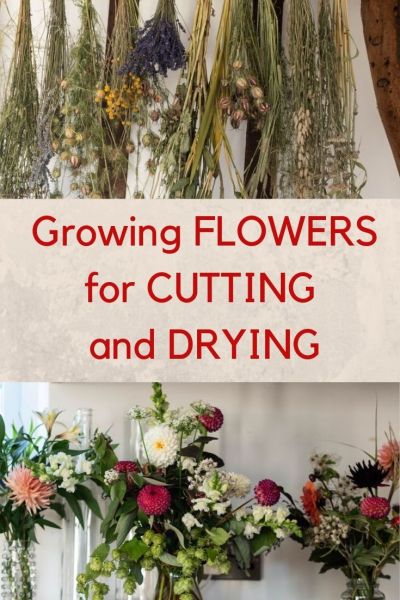
























Interesting article. I always thought, though, that as soon as the bees pollinate the flower it starts to go over, so for cut flowers you want to pick them, if possible, before that happens. (Particularly foxgloves)
Interesting, I hadn’t heard that but I will check.
Do you need insurance?
It’s considered good practice (even essential) to have insurance in whatever business you’re in.
So helpful, thank you.